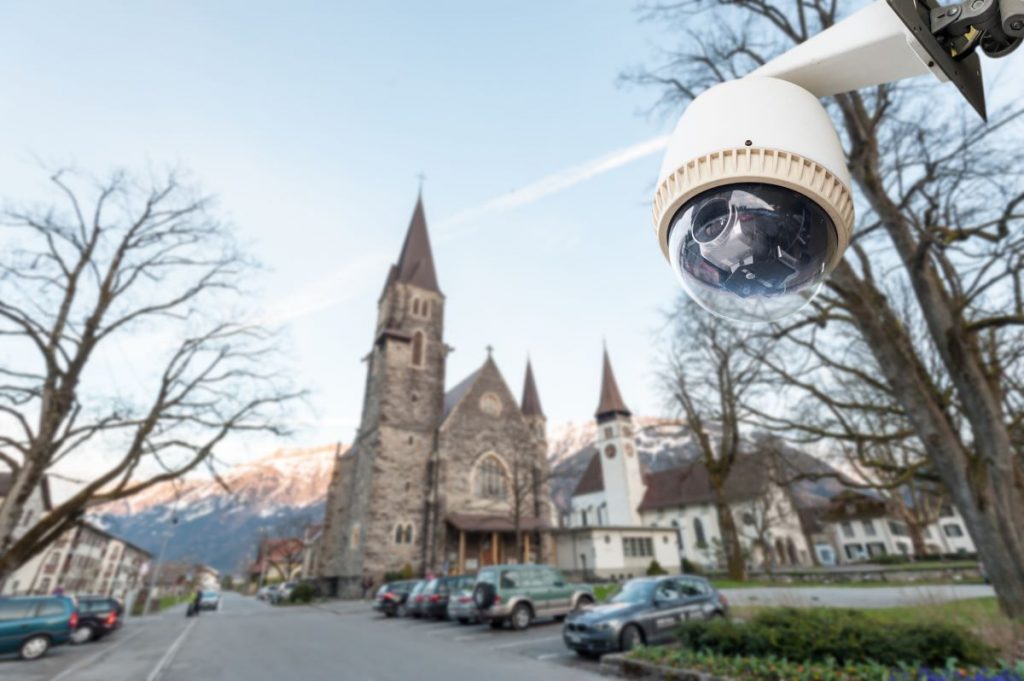| Nov 8, 2024
Place of Worship Security: Implementing Forms and Principles of Protection

The Importance of Applying Conceptual Security Frameworks for Place of Worship Security
As the Cybersecurity and Infrastructure Security Agency explains in their 2020 publication, attacks in cities such as Charleston and Pittsburgh have accelerated the conversation about protecting places of worship. These institutions represent highly symbolic, relatively vulnerable targets that radicalized threat actors and domestic violence perpetrators alike can exploit. When evaluating the overarching security posture for places of worship, it is important to consider the potential threats, hazards, vulnerabilities, and protective measures available to the church, synagogue, temple, or mosque. It is likewise important for private security companies to apply conceptual frameworks to place of worship security to ensure security measures are as robust as possible. For this reason, place of worship security should be viewed through the lens of the Forms and Principles of Protection.
Utilizing the Forms of Protection to Secure Places of Worship:
The forms of protection are (1) Deterrence, (2) Detection, (3) Delay, and (4) Response. These reflect the continuous nature of protection, or security, and provide a method to develop and employ security capabilities.
Security Through Deterrence
Visible security measures can discourage potential threats from attacking places of worship. As RAND explains, deterrence involves… “humans trying to dissuade other humans from taking particular courses of action.” Examples include visible security cameras, proper lighting, and the presence of armed security guards.
Security Through Detection
Surveillance systems, alarms, and procedures for reporting suspicious activity allow for threats to be identified before an attack occurs; armed and unarmed guards and trained staff also support early detection. Combined, all of these measures help identify and evaluate potential threats to places of worship.
Security Through Delay
These consist of access control measures such as locks, reinforced doors, ballistic glass, and other physical barriers that can impede a threat’s movement. These security measures protect places of worship form intrusion by delaying or preventing a potential threat’s movement, or by protecting the structure and people inside from weapons.
Security Through Response
Emergency management plans, relationships with local law enforcement, and a capable security force – whether private security or proprietary – are critical. Sometimes attacks occur against places of worship regardless of the target’s attempts to deter, detect, or delay an aggressor. Even when first responders arrive quickly (say, within 4-5 minutes), having a security guard presence on site can be a critical factor in saving lives.
Utilizing the Principles of Protection to Secure Places of Worship:
The principles of protection are (1) Comprehensive, (2) Integrated, (3) Layered, (4) Redundant, and (5) Enduring. These provide a context for place of worship security planning efforts, developing protection or security strategies, and allocating security resources.
Security Should be Comprehensive
All available security measures available should be utilized. Army Doctrine Publication (ADP) 3-37 defines this as an “all-inclusive utilization of complementary and reinforcing” set of security tasks and systems.
Security Should be Integrated
Place of worship security efforts must by unified vertically and horizontally with community security partners. Vertical integration includes coordination between a specific place of worship, or program, and the overarching organization. Horizontal integration includes integrating with other places of worship and faith-based organizations, private security companies, law enforcement, and other first responders.
Security Should be Layered
Multiple, overlapping security measures provide what is known as “security in depth.” For example, armed guards manage risks that overlap with security cameras and access control measures, which overlap with information technology and cybersecurity measures, which overlap with protective intelligence and information sharing security measures.
Security Should be Redundant
Critical vulnerabilities require at least primary and alternate protection capabilities. In the context of places of worship, one example of this is utilizing motion sensors or alarms as the primary intrusion detection method, and armed guards conducting regular patrols of critical areas as the alternate intrusion detection capability.
Security Should be Enduring
Bottom line – security is an ongoing process that requires continuous attention. Place of worship security assessments should occur on a regular basis, and there should be a scheduled and systematic process to address security vulnerabilities.
A Comprehensive and Systematic Approach to Securing Places of Worship
Securing places of worship requires a comprehensive and systematic approach that utilizes both the Forms and Principles of Protection. When private security companies or places of worship implement the forms of protection, religious institutions can create a robust security framework. Adhering to the principles of protection ensures that place of worship security efforts are thorough, coordinated, and sustainable. This holistic approach not only enhances the safety of congregants, but it can also preserve the welcoming nature of these sacred spaces.
At Convoy Group, our approach to place of worship security is designed to strike the delicate balance between openness and safety; align with the place of worship’s values and mission; and support the organization through enduring security solutions.
